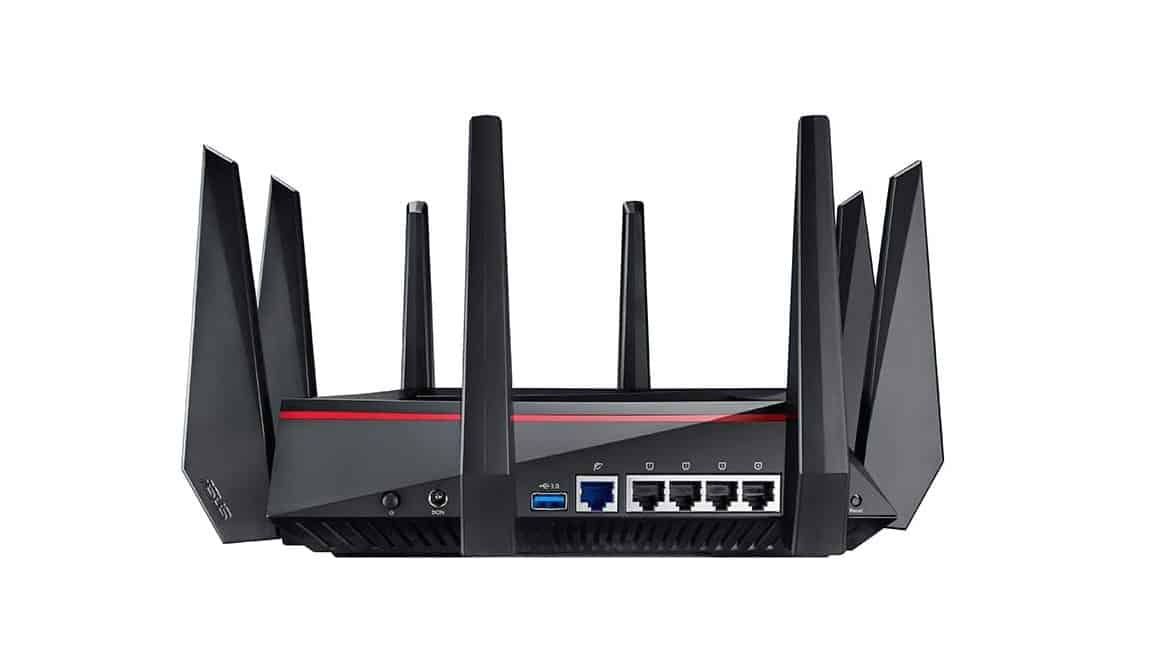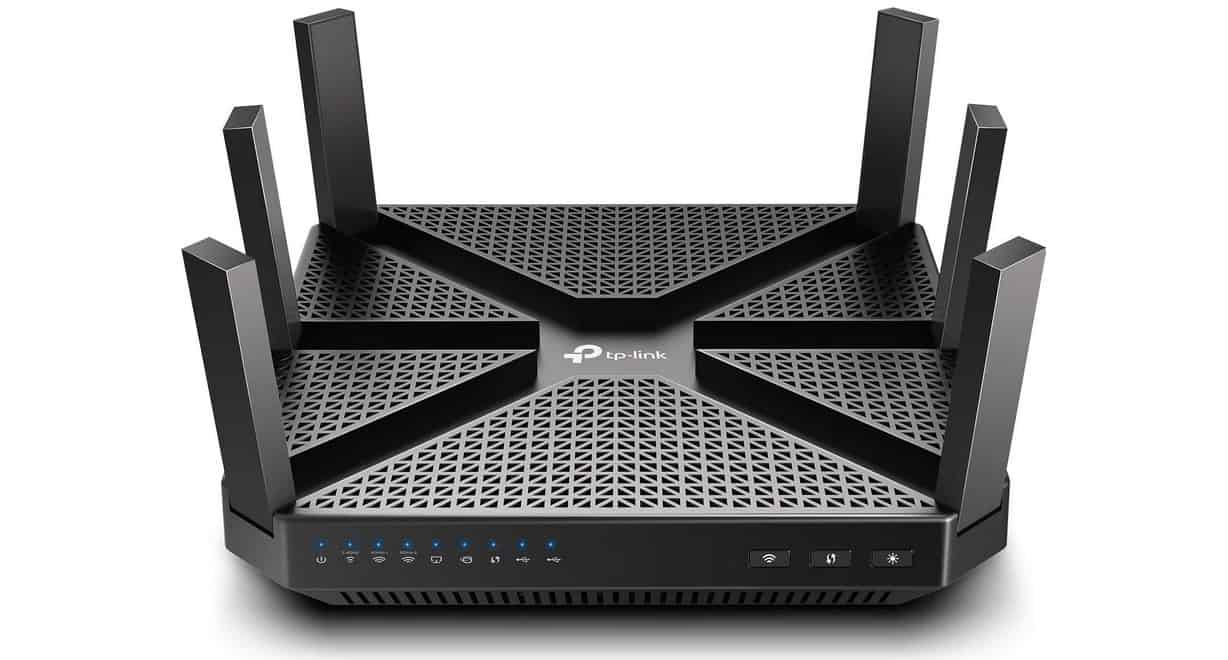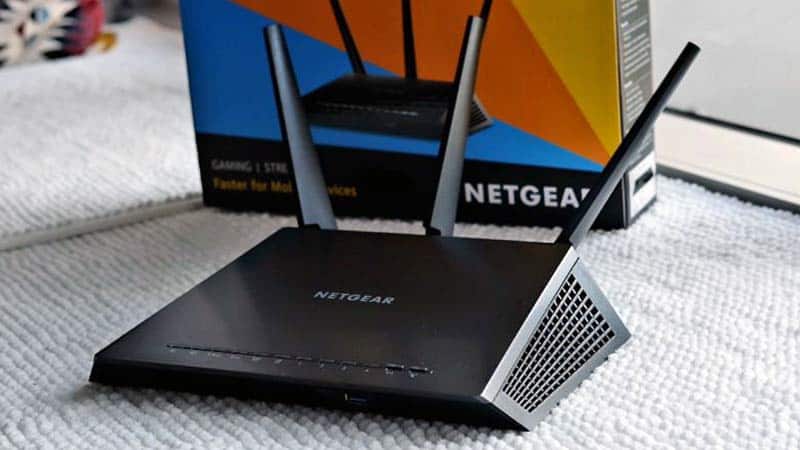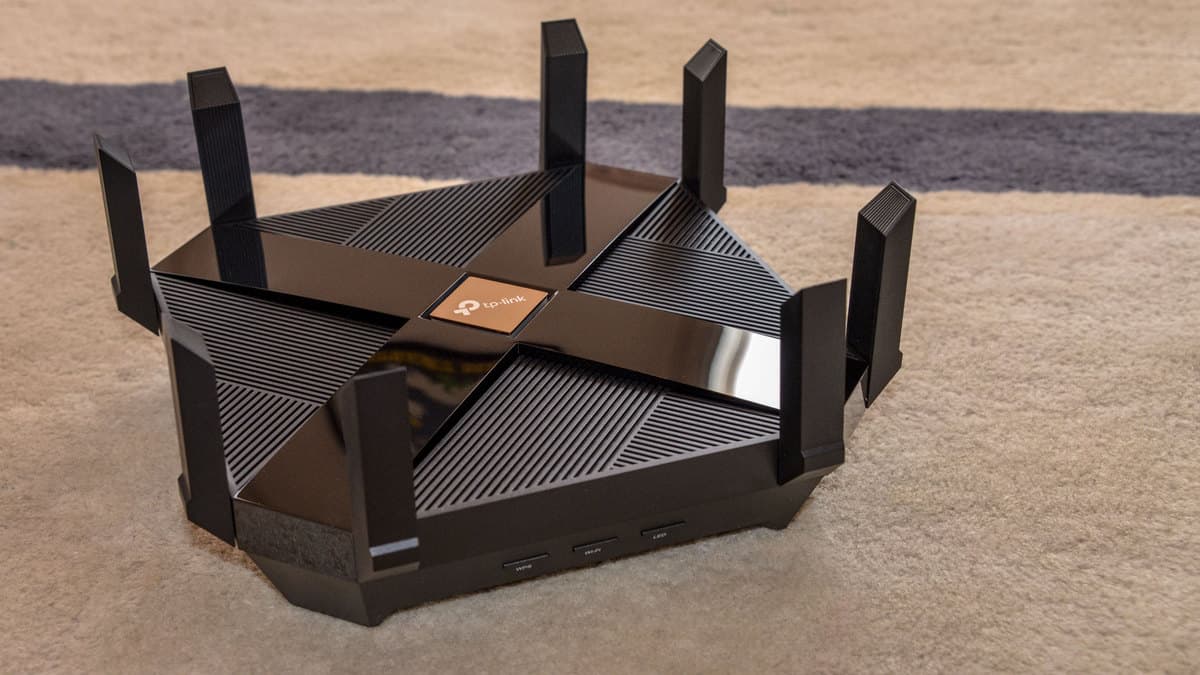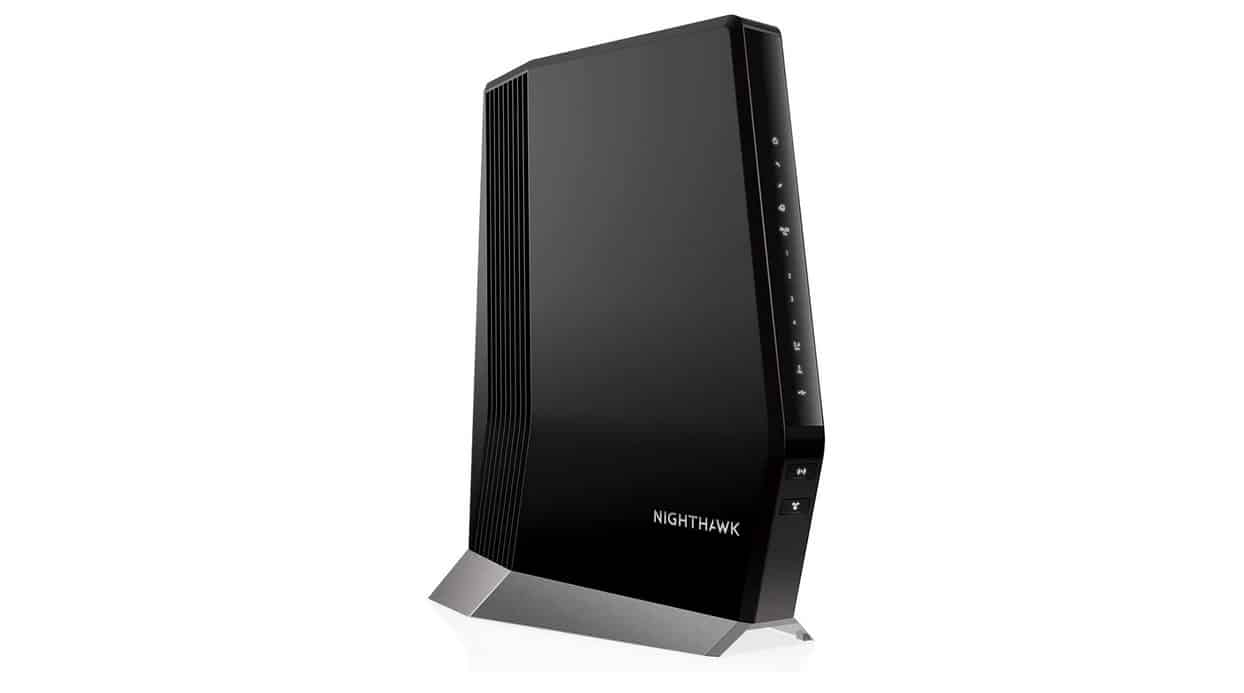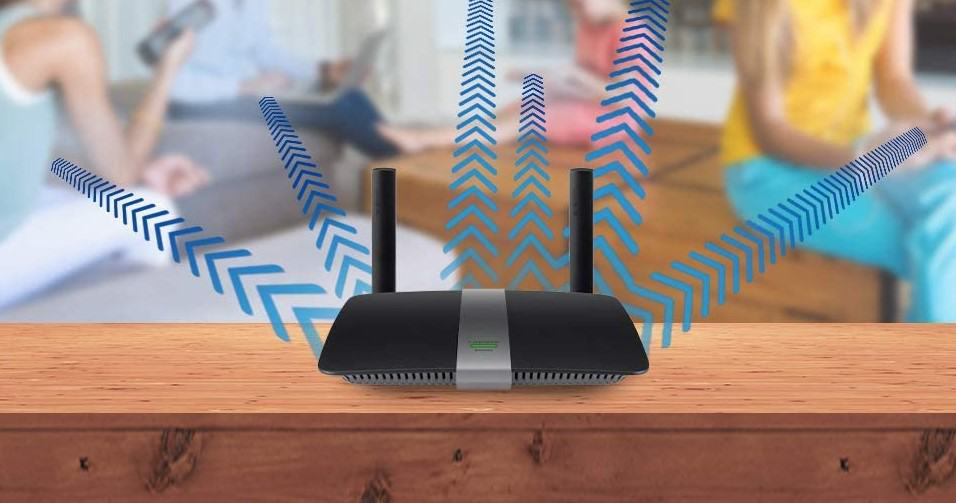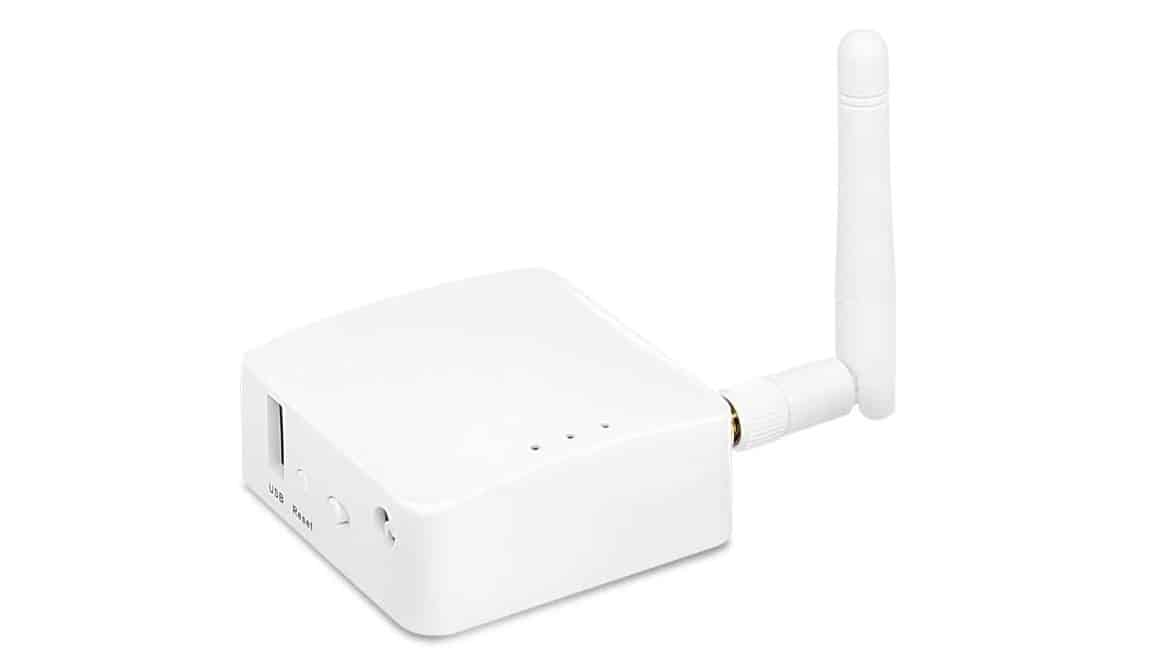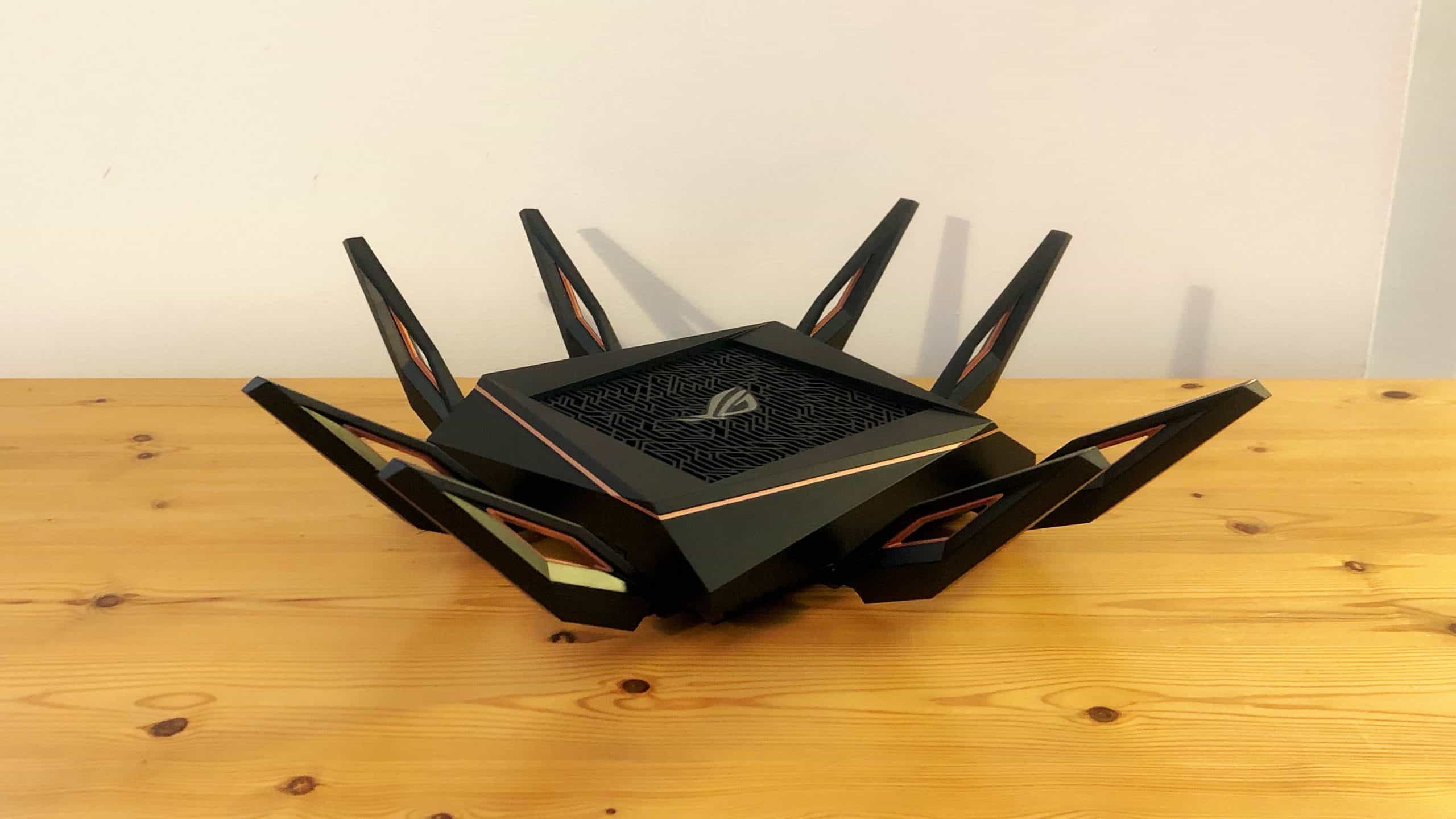What are the features that make the best fiber optic routers? It starts with fast internet speeds, which is one of the main reasons for going with a fiber optic internet connection. You’ll likely want to look for wireless routers with at least two Gigabit Ethernet ports and tri-band coverage for multiple devices. Next, the best fiber optic router or mesh router systems have enough range to provide a stable connection throughout the building and may have advanced features such as parental controls and custom firewall systems for security.
Switching to a fiber-optic connection might make a lot of sense for people who work at home, gamers, and families who need to run a larger number of devices. If your ISP uses a Fiber-To-The-Home or FTTH system, then an optical network terminal modem along with the right fiber optic router can help you enjoy much faster internet and transfer speeds. Keep reading to learn more about the best fiber optic routers and how to navigate the complexities of the best wireless router buying choices.
Top Fiber Optic Routers
#1 ASUS CMAX6000 Router
Award: TOP PICK
WHY WE LIKE IT: This model features incredible connectivity options and is compatible with the latest Wi-Fi standard and browsing speeds. Users will love this model for the network prioritization and multi-channel connectivity that mitigates lag on a busy home network.
- Excellent speed
- Serves as a modem and router
- Dual-band connectivity
- Sub-par support
The ASUS CMAX6000 router is an excellent pick for users wanting to access gigabit internet across a busy home network. This modem-router combo can replace the sub-par ISP-supplied unit so that users can access proper gigabit speeds, even in a multi-user household. This combo router features four Ethernet ports for a lag-free wired connection, and users will love the dual-band Wi-Fi that ensures proper network prioritization. While the ASUS support team isn’t the best, this model features beneficial setup info and high ISP compatibility.
In addition to dual-band Wi-Fi and multiple Ethernet ports, the ASUS AX6000 router utilizes the cutting-edge wireless protocol Wi-Fi 6 which supports up to 6000 Mbps for compatible devices. Additionally, this combo unit features a modern design that would fit into a professional office or gamer-centric computer room. Additionally, this model is extra-quiet, thanks to a fan-free design that uses 100% passive cooling. Lastly, users will love the clear indicator lights on the front that keep them informed about their connection status.
#2 NETGEAR RBK50-100NAS Router
Award: HONORABLE MENTION
WHY WE LIKE IT: This wireless network delivers exceptional speeds and an incredible range so users can stay connected to their favorite sites and services anywhere around their homes. Additionally, this advanced kit offers up to 25 simultaneous connections for a home of super-users or mid-sized office space.
- Incredible coverage
- Clean design
- Up to 3Gbps
- Sub-par smartphone app
The NETGEAR RBK50-100NAS router is a mesh Wi-Fi solution that delivers an amazing coverage area for large homes or offices with numerous internet-connected devices. This clean-looking internet solution offers a router and satellite to cover up to 5000 sq. ft. Each unit provides multiple Ethernet ports for a secure wired internet connection. Thanks to the tri-band Wi-Fi system, this model offers advanced network prioritization that improves device speeds and minimizes bandwidth clogs. While the associated smartphone app isn’t the best, this Wi-Fi mesh system is simple to set up with most ISPs.
In addition to a simple setup and large coverage area, the NETGEAR RBK50-100NAS offers enhanced home or office network security thanks to granular in-app controls. This model lets users easily create guest networks, adjust parental controls, and perform internet speed tests to hold their ISP accountable. Thanks to NETGEAR Armor, this unit features built-in anti-virus and data theft protection for all connected devices like smartphones, laptops, and gaming consoles.
#3 TP-Link Archer AX6000 Router
Award: BEST FOR SMART HOMES
WHY WE LIKE IT: This powerful unit features a stable wire-free connection and enough ethernet connections for a family of PC gamers or a busy office environment. This model delivers a more efficient network and allows users to take advantage of their high-speed internet plan.
- Impressive device capacity
- Parental controls
- Supports older Wi-Fi devices
- Router software lacks depth
The TP-Link Archer AX6000 router is an excellent pick for users that need reliable gigabit speeds for gaming, streaming media, and browsing the web. This Wi-Fi 6 router utilizes the latest Wi-Fi standard for advanced network prioritization that delivers network efficiency and increased internet speeds for all connected devices. Additionally, this model offers a wide wireless signal and supports an incredible number of simultaneous connections. While the router’s app controls lack depth for advanced users, it still provides parental controls and virus protection.
In addition to a large coverage area and network efficiency, the TP-Link Archer AX6000 provides an internet upgrade, even to older wireless devices. Thanks to AX technology, this model improves wireless performance with modern devices, and it is backward compatible with legacy devices and older hardware. Additionally, this model is ideal for smart home connectivity, and it is compatible with Amazon Alexa voice controls. Lastly, users can apply device-specific limits through the app or group devices to set time limits or content filters under a single user profile.
#4 ASUS RT-AC5300 Router
Award: BEST FOR CASUAL BROWSING
WHY WE LIKE IT: This unit offers advanced network protection and enough bandwidth to support a robust home network with numerous users. Additionally, this model has a striking design and enough ethernet ports to simultaneously provide a robust wired connection to multiple users.
- Strong performance
- Multiple gigabit LAN ports
- Network security features
- Huge footprint
The ASUS RT-AC5300 router is an excellent choice for users wanting break-neck internet speeds for competitive online games and streaming media. This massive model offers an impressive range at 2.4Ghz and decent coverage with a much faster 5Ghz connection. Additionally, the four Gigabit LAN ports allow for multiple wired internet connections so users can game or browse the web without risking a signal drop. While this model takes up a lot of room, the number of antennas enables comprehensive coverage and strong wireless performance.
In addition to multiple Ethernet ports and dual-band connectivity, the ASUS RT-AC5300 protects users and allows them granular control with the ASUSWRT User Interface and ASUS Router App. Users can manage their network, solve connection problems, and update the router firmware with these tools. Additionally, this router offers AiProtection so users can refine parental controls, restrict content, and block specific network-connected devices from accessing the internet at specific times of the day.
#5 Google NLS-1304-25 Router
Award: BEST FOR LARGE HOUSES
WHY WE LIKE IT: This versatile and user-friendly kit offers an extensive mesh network and excellent dual-band internet for fast internet speeds and advanced network prioritization. The integrated smartphone application allows users to fine-tune their network and set special permissions and controls on specific devices.
- Excellent integrated app
- Great internet speeds
- Multiple Ethernet ports
- No choice between 2.4G or 5G
The Google NLS-1304-25 router is an excellent choice for users needing a fast wireless network with consistent speed over a large home or office environment. This mesh network solution offers a main router and two satellites to spread dual-band internet up to 4500 sq. ft. Additionally, this model offers up to 1.2Gbps, well-equipped for fiber internet and cutting-edge speeds. While users cannot choose between the 2.4G or 5G band, this mesh Wi-Fi system automatically selects compatible devices for each wireless band.
In addition to the exceptional wireless range and incredible supported bandwidth speeds, the Google NLS-1304-25 delivers a dead-zone-free environment, even for your wired internet devices. Each unit in this three-part system offers two Ethernet ports to provide high-speed internet, even for non-wireless devices. With Network Assist technology, this router ensures the fastest possible speeds by selecting the least congested channel and the quickest wireless band for your devices.
#6 NETGEAR XR700-100NAS Router
Award: BEST FOR GAMERS
WHY WE LIKE IT: This model features gamer-centric features and dual-band connectivity to ensure an optimized network for the fastest possible transfer rates and device communication. Additionally, users will love the support for wired internet and the large service area.
- Strong features for gamers
- Powerful processor
- Stable connection
- No parental controls
The NETGEAR XR700-100NAS router is a terrific choice for competitive gamers that need any edge they can get. This model is optimized for minimal ping in today’s top titles, and with the Geo-Filter, users can mitigate lag by limiting their distance from the competition. Additionally, users can block laggy opposition and safelist their faraway friends from getting blocked by the Geo-Filter. While this model doesn’t feature parental controls, users get manual control over connection speeds and device priority through the customizable NETGEAR dashboard.
In addition to ping mitigation and a useful real-time dashboard to monitor bandwidth usage, the NETGEAR XR700-100NAS router provides excellent connectivity options for a multi-device household. This model offers dual-band connectivity so that users can prioritize their network based on bandwidth needs. Additionally, users can manually prioritize bandwidth allocation to gaming devices, and they can limit upload and download speeds for non-essential connected devices. Lastly, users will love the 6 Ethernet ports that offer Gigabit speeds and zero lag over a wired connection.
Beginner’s Guide to Fiber Optic Routers
What Are Fiber Optic Routers?
Fiber optic routers, as opposed to fiber optic modems, are simply WiFi routers that are compatible with an internet service provider’s fiber-optic broadband service and support the higher bitrates that fiber optic cable can provide.
Fiber Optic Routers vs Routers in General
Compared to routers in general, the best router for fiber optic FTTH connections is likely to be newer and support faster connections. The ideal router for connecting your home WiFi LAN to a fiber-optic network will likely have Gigabit Ethernet ports and at least dual-band coverage. Using the 5GHz band or the more recent 6GHz bands enables your devices to utilize the higher throughput speeds available with fiber-optic broadband.
Like most wireless and 4G LTE routers, the top-rated models for fiber-optic connections employ two or more radio bands and can connect several devices to the internet via a wireless LAN. Also, like other routers, the best fiber-optic routers use WPA2 security features and enable you to set firewalls.
As with routers in general, fiber-optic network routers can use various techniques to make sure you get a strong signal throughout the house. They can be single devices, or they can consist of multiple-device systems, as with mesh routers.
The best router systems for fiber optic connections differ from regular wireless routers in that they support higher traffic volume and a faster transfer rate. Fiber-optic connections typically aim for Gigabit router speeds. Therefore, the best internet routers for these faster networks will also offer a faster maximum wireless speed.
Like gaming routers and other high-performance models, the best routers for fiber-optic systems will also have very low latency, in addition to a high router network speed.
How Fiber Optic Routers Work
Fiber optic routers work like other wireless routers, only with certain specs optimized for use with an optical fiber network connection. Routers take a broadband signal from the internet provider, usually via ethernet connection through a “jack” in the wall, and convert the wired signals into wireless signals, which the router broadcasts throughout the house on one or more radio frequency bands.
A wireless router for fiber optical high-speed internet is in some ways related to a fiber optic modem. However, a modem only modulates the analog signal coming from the ISP and turns it into digital signals that a device can access using a wired connection. On the other hand, a wireless router does significantly more signal processing work and generates wireless GHz band signals.
Most routers can provide multiple channels and direct wireless “traffic” across the home network. Some can also maintain firewalls, filter the incoming and outgoing data, and monitor the traffic, but a high-end router may add a sophisticated CPU, beam-forming antennae, parental controls, and VPN compatibility.
The best Gigabit router options for a fiber-optic connection take advantage of the fiber-optic cable’s speed and bandwidth. They then add strong high-speed wireless connectivity with an excellent range.
Why You Should Buy a New Fiber Optic Router
If your home or business has a fiber-optic connection and your current router is not enabling a wireless speed that matches the speed of the wired connection, you might benefit from a router upgrade. Or, if you’ve just moved somewhere with fiber-optic FTTH service, you may want to make sure to choose a Gigabit Wi-Fi router for fiber optic connections to ensure you get the quality of service the fiber-optic broadband infrastructure can offer.
You may also want to upgrade your router if you’ve recently invested in smart home devices, streaming devices, or new gaming consoles. IoT devices such as smart home security systems, pet cameras, and baby monitors function better if using a dedicated 5GHz band of a tri-band router. If your house gets an optical signal and you use your Wi-Fi for video conferencing or live-streaming, a fiber-optic modem and Wi-Fi router setup might be an excellent choice.
Compared to older routers, new fiber-optic optimized models also have benefits beyond just faster file transfer speeds. A newer router may offer improved security features thanks to a more sophisticated dual-core processor. Modern routers also make it easier to get a reliable connection throughout the home with fewer compatibility issues. A router for fiber optic internet can also provide more features like parental controls, firewalls, and VPN service.
Finally, upgrading to the latest generation Wi-Fi 5 and Wi-Fi 6 routers allows you to have more wireless devices working over the same network without slowing down the wireless speed.
Is a Fiber Optic Router Worth Buying?
- New Internet Service Connection: A residential or commercial optical fiber connection can allow for a faster file transfer speed up to 1000Mbts/sec or more, but your Wi-Fi network router will still limit your local wireless connection speed unless it’s optimized for fiber optics.
- Online Gaming: Choosing a new router for fiber broadband can boost connection speeds and improve responsiveness when playing online games. An upgraded router can be a fantastic choice for cloud gaming optimization.
- Work from Home: Teleconferencing and working from home is much smoother with a fast, stable internet connection. If your building has access to fiber-optic broadband, then choosing a great router for fiber internet may provide enhanced performance using video conferencing apps, voice over IP, and shared document and file transfer systems.
- Numerous Devices: Even if you have a 1-Gbps fiber internet connection, you won’t see the benefits of a high-speed wireless network without a router that can handle the number of connections you need for all your wireless devices. Modern routers designed for Gigabit connections over fiber cables usually offer tri-band or dual-band service, allowing for more compatible devices to connect at once.
- Smart Home Automation: Today’s smart home devices use up bandwidth on your home Wi-Fi network, so if you have lots of connected IoT devices such as a smart doorbell, pet cameras, thermostat, or a smart speaker setup, you may want to make sure your router isn’t limiting the bandwidth of your WiFi coverage.
Why a Fiber Optic Router May Not Be for You
- Using the ISP-Issued Router: Even if your ISP included a router with their installation, you might not be getting the full benefit of the available broadband connection. Many budget routers introduce “bottlenecks” when you try to connect more than one or two devices. An upgraded router for fiber internet can boost your wireless network to take full advantage of the Gigabit fiber-optic infrastructure.
- No Fiber Optic Connection: Installing a gigabit router optimized for high throughput speeds won’t make your internet any faster if you’re already accessing the maximum wide-area network speeds your cable connection or ethernet offers. However, even if you don’t have full FTTH fiber-optic cable in your area, an improved router can offer other benefits besides the theoretical gigabit speeds. Using the updated Wi-Fi 5 or 802.11ac standard, or the even newer Wi-Fi 6 protocol, allows you to use more devices simultaneously.
How Long Do Fiber Optic Routers Last?
As with routers in general, fiber optic routers have a projected 5-year lifespan. This factor doesn’t take into account the real-world habits of home internet users, however. Depending on the ISP, the service type, and the type of router, wireless LAN hardware can last longer than five years. However, many routers become obsolete due to changes in service and internet access protocols. For example, your current Wi-Fi router may work fine on the 2.4 GHz band, but if you want to use multiple devices at once as part of a smart home setup, an older router may not be able to handle the increased traffic.
To help extend the lifespan of your router or mesh router hardware, place your devices in areas as safe as possible from spills and accidental damage. You’ll also want to keep your router away from extreme heat and humidity. Most Ethernet cables and PoE cables work better at moderate room temperatures.
How to Choose the Best Fiber Optic Router
Various factors can help you decide on the ideal router for Gigabit WAN fiber-optic internet. In general, to make use of the increased bandwidth and throughput speeds, you’ll want a capable router with at least dual bands, including support for the 5GHz band. You might also want to consider modern routers with options like tri-band mesh networking. If you need your Wi-Fi network to have minimal latency, you might want to consider a Wi-Fi 6 gaming router.
Router for Fiber Optic Key Factors
1. How Large of an Area Do You Need?
The choice of router, along with the strength of the cable internet or fiber-optic signal, helps determine how many square feet your local area network can cover. A single router will provide ample coverage for small houses and offices. At the same time, for applications where you need an extended range to cover more than about 2000 square feet, you may find that a mesh network router system is a perfect choice.
2. What Extra Features Do You Need?
While any router with sufficient high-speed performance will work for fiber-optic broadband, not all routers offer the same array of advanced features. Some models provide sophisticated parental controls, custom firewall setup, and mobile apps that let you monitor your home network from anywhere.
3. How Many Connections Do You Need?
The average number of devices that connect to the internet using wireless technology has gone up, and modern routers have to accommodate multiple connections. For the most dedicated gamers and live-streamers, a router for fiber internet that supports tri-band coverage enables a separate channel for data-intensive applications.
4. Do You Use IoT Devices?
Smart home devices like connected thermostats, doorbell cameras, pet cameras, and smart speakers often work best when using a dedicated channel of the home Wi-Fi network. So if you have a lot of these IoT systems, you might want to take their bandwidth needs into account when choosing the best fiber-optic router.

![Best Fiber Optic Routers in [year] 1 best fiber optic router](https://www.gadgetreview.dev/wp-content/uploads/best-fiber-optic-router-image.jpg)


![Best Fiber Optic Routers in [year] 2 ASUS AX6000 WiFi 6 Cable Modem Wireless Router Combo...](https://m.media-amazon.com/images/I/41LAdjJzawL._SL160_.jpg)
![Best Fiber Optic Routers in [year] 3 NETGEAR Tri-Band Whole Home Mesh WiFi System with 3Gbps...](https://m.media-amazon.com/images/I/21ESRgXhE8S._SL160_.jpg)
![Best Fiber Optic Routers in [year] 5 TP-Link AX6000 WiFi 6 Router(Archer AX6000) -802.11ax...](https://m.media-amazon.com/images/I/41H3hckYDyL._SL160_.jpg)
![Best Fiber Optic Routers in [year] 12 Our #4 Pick is the ASUS RT-AC5300 Router](https://m.media-amazon.com/images/I/41aH4w1iDNL._SL160_.jpg)
![Best Fiber Optic Routers in [year] 13 Our #5 Pick is the Google NLS-1304-25 Router](https://m.media-amazon.com/images/I/21V-iGnA4CS._SL160_.jpg)
![Best Fiber Optic Routers in [year] 15 Our #6 Pick is the NETGEAR XR700-100NAS Router](https://m.media-amazon.com/images/I/41LSVkn3pnL._SL160_.jpg)



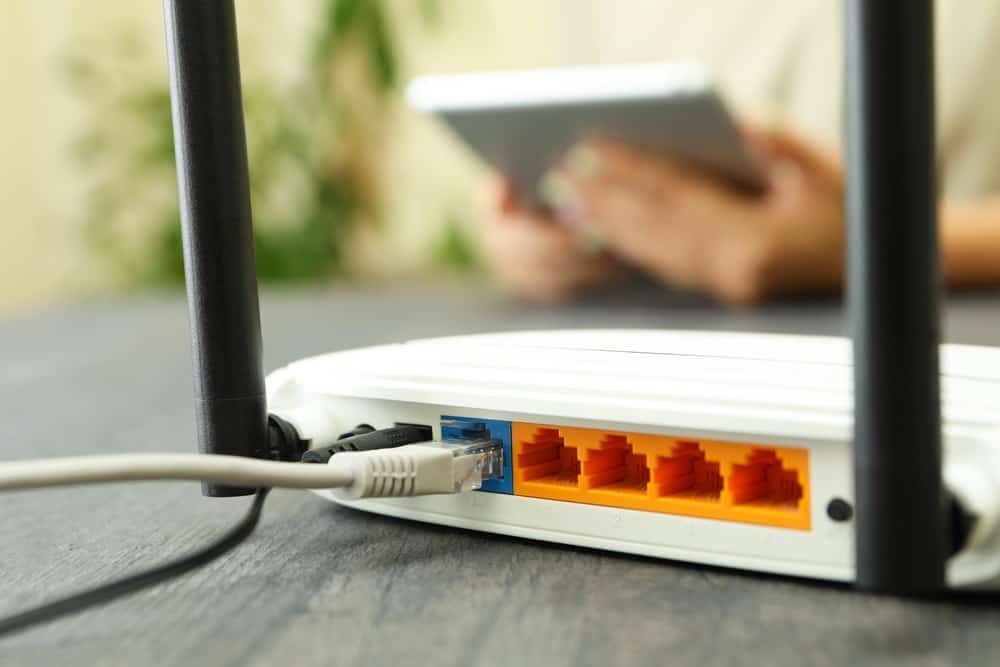
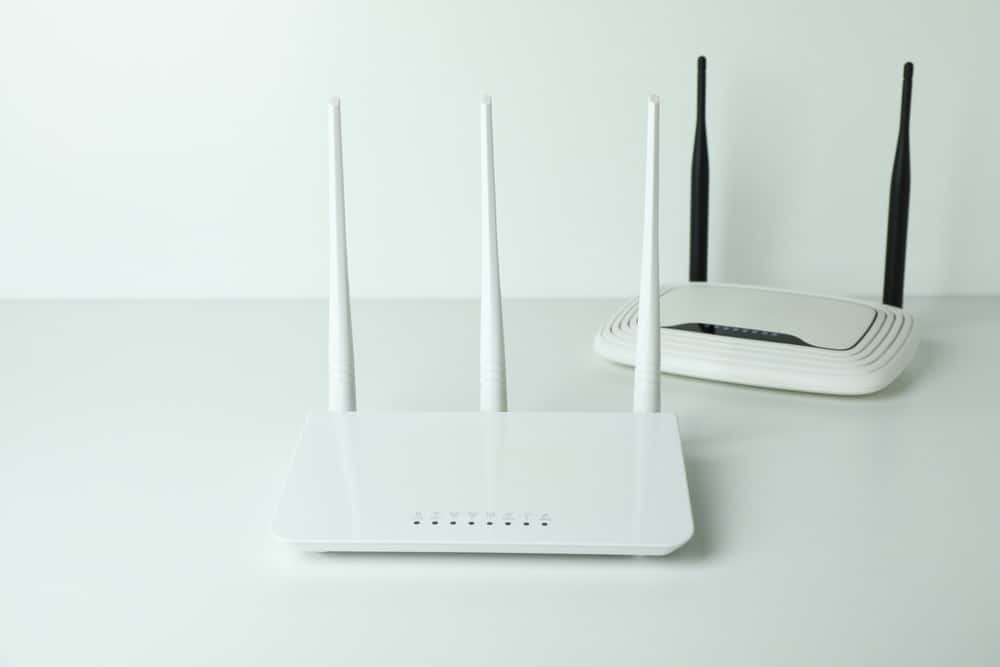





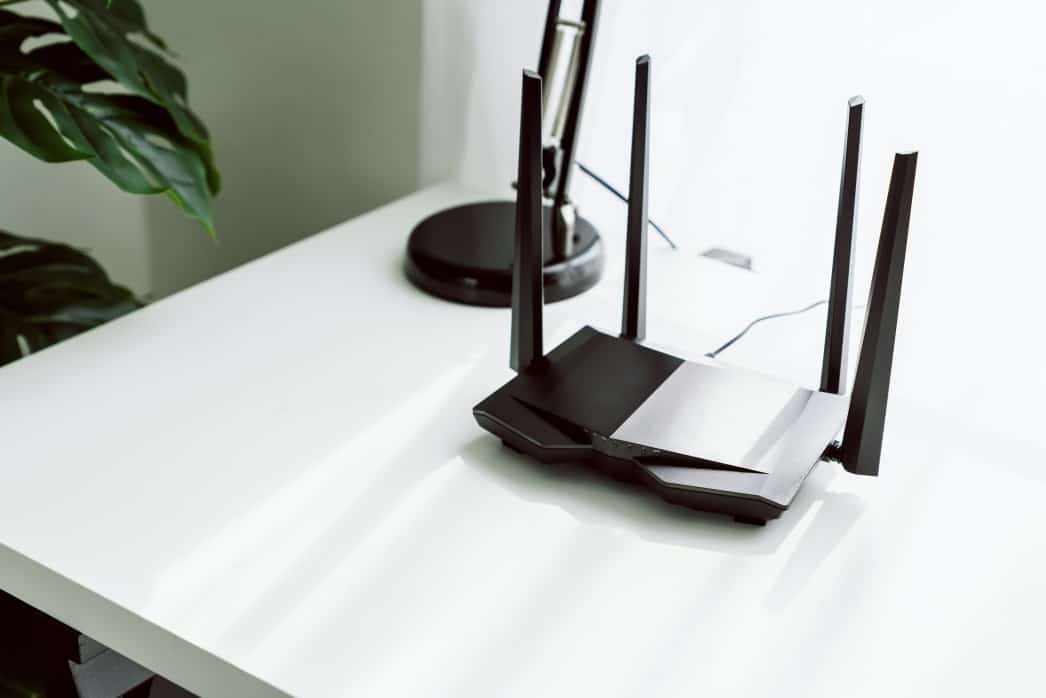




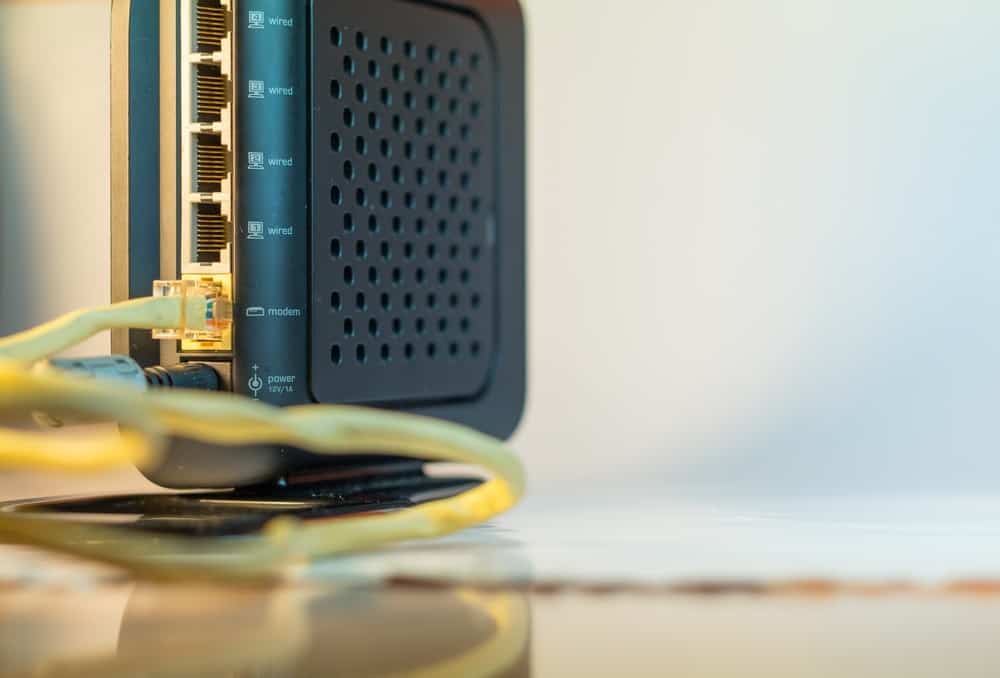

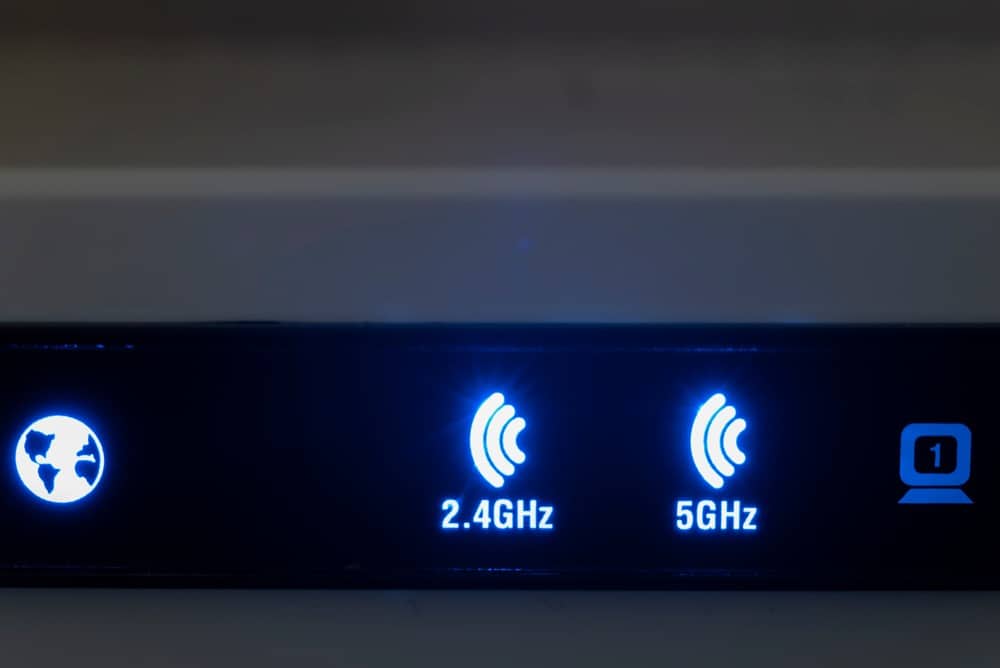

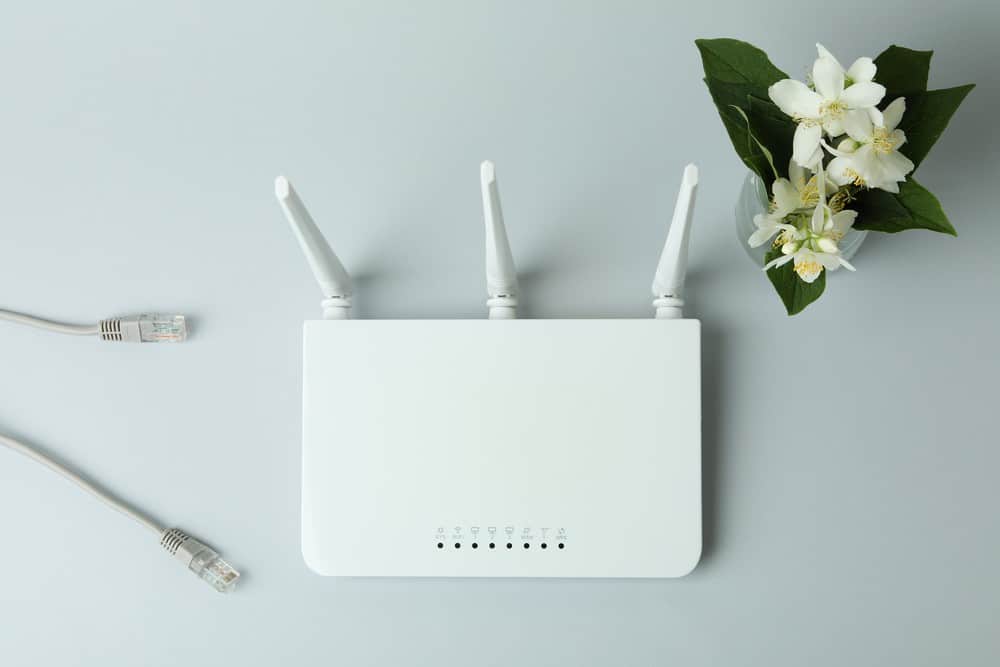
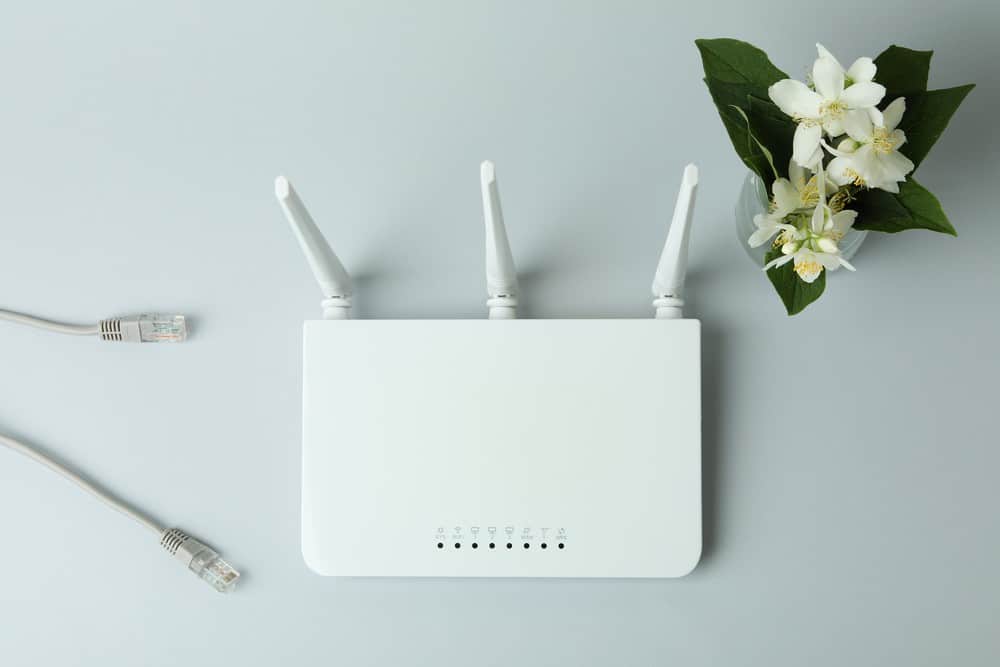

![Best BenQ Monitors in [year] 37 Best BenQ Monitors in 2026](https://www.gadgetreview.dev/wp-content/uploads/best-benq-monitor-image.jpg)
![Best Wifi Extenders For FiOS in [year] 38 Best Wifi Extenders For FiOS in 2026](https://www.gadgetreview.dev/wp-content/uploads/best-wifi-extender-for-fios-image.jpg)
![Best VoIP Routers in [year] 40 Best VoIP Routers in 2026](https://www.gadgetreview.dev/wp-content/uploads/best-voip-router-image.jpg)
![Best Routers for 200Mbps in [year] 41 Best Routers for 200Mbps in 2026](https://www.gadgetreview.dev/wp-content/uploads/best-router-for-200mbps-image.jpg)
![Best Routers for Optimum in [year] 42 Best Routers for Optimum in 2026](https://www.gadgetreview.dev/wp-content/uploads/best-router-for-optimum-image.jpg)
![Best Routers for Apple in [year] 43 Best Routers for Apple in 2026](https://www.gadgetreview.dev/wp-content/uploads/best-router-for-apple-image.jpg)
![Best Routers for Frontier FIOS in [year] 44 Best Routers for Frontier FIOS in 2026](https://www.gadgetreview.dev/wp-content/uploads/best-router-for-frontier-fios-image.jpg)
![Best Secure Routers in [year] 45 Best Secure Routers in 2026](https://www.gadgetreview.dev/wp-content/uploads/best-secure-router-image.jpg)
![Best Routers for Google Fiber in [year] 46 Best Routers for Google Fiber in 2026](https://www.gadgetreview.dev/wp-content/uploads/best-router-for-google-fiber-image.jpg)
![Best Routers for Cox in [year] 47 Best Routers for Cox in 2026](https://www.gadgetreview.dev/wp-content/uploads/best-router-for-cox-image.jpg)
![Best Asus Routers in [year] 48 Best Asus Routers in 2026](https://www.gadgetreview.dev/wp-content/uploads/best-asus-routers-image.jpg)
![Best Linksys Routers in [year] 49 Best Linksys Routers in 2026](https://www.gadgetreview.dev/wp-content/uploads/best-linksys-routers-image.jpg)
![Best Routers for CenturyLink in [year] 50 Best Routers for CenturyLink in 2026](https://www.gadgetreview.dev/wp-content/uploads/best-router-for-centurylink-image.jpg)
![Best WiFi Routers for Multiple Devices in [year] 51 Best WiFi Routers for Multiple Devices in 2026](https://www.gadgetreview.dev/wp-content/uploads/best-wifi-router-for-multiple-devices-image.jpg)
![Best Wired Routers in [year] 52 Best Wired Routers in 2026](https://www.gadgetreview.dev/wp-content/uploads/best-wired-router-image.jpg)
![Best Routers for 4K Streaming in [year] 53 Best Routers for 4K Streaming in 2026](https://www.gadgetreview.dev/wp-content/uploads/best-router-for-4k-streaming-image.jpg)
![Best Cisco Routers in [year] 54 Best Cisco Routers in 2026](https://www.gadgetreview.dev/wp-content/uploads/best-cisco-routers-image.jpg)
![Best eero Routers in [year] 55 Best eero Routers in 2026](https://www.gadgetreview.dev/wp-content/uploads/best-eero-routers-image.jpg)






